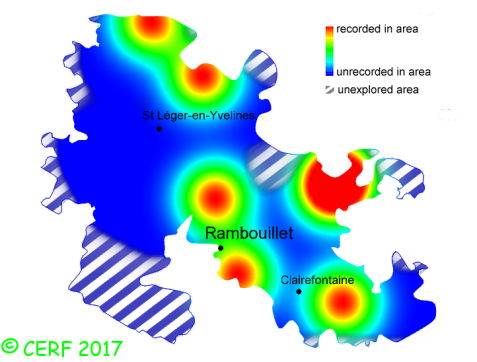| Crepidotus mollis (Schaeffer.:Fr.) Staude |
|
|
|
|
|
|
The cap is whitsh cream to yellow, then pale ochre brown especially from the attachment point, convex, kidney-shaped or bracket-like, often tiered; its margin is grey-brown, incurved and thin, striate when moist. The cap surface is sometimes with reddish-brown scattered scales (var. capolepis), covered with a gelatinous and elastic film than can be easily separated. The stem is absent most of the time, sometimes present but rudimentary, very off-centred, whitish. The flesh is watery, soft, pale brown to whitish when drying, unchanging; its taste is tasteless, mild or slightly bitter, not distinctive; the odour is faint; its texture is fibrous. The gills are creamy-white to grey then cinnamon, sometimes washed with reddish-brown with old age, ascending to decurrent towards attachment point, crowded and broad . The spore print is snuff-brown. This species is saprophytic, sometimes parasitic. It grows on dead wood, in deciduous woods, on stumps, large fallen branches, preferably on ash or beech, also on poplar or elm. The fruiting period takes place from July to December.
Chemical tests : aucun. Distinctive features : whitish to pale brown cap, covered with a gelatinous film, elastic and easily separated; stem absent or rudimentary, lateral; white gills, becoming brown, crowded; serrées; on deciduous wood, usually dead Crepidotus mollis is quite rare and scattered in the forest of Rambouillet, and is frequent, more generally speaking . | ||
|
page updated on 14/01/18

